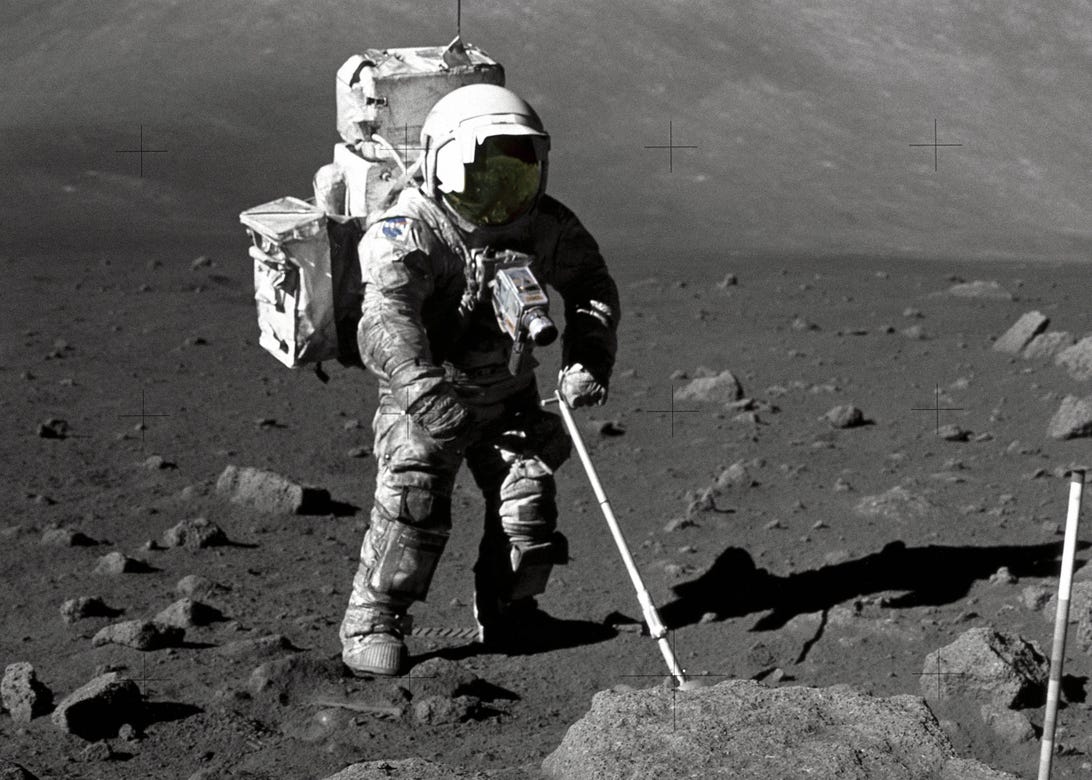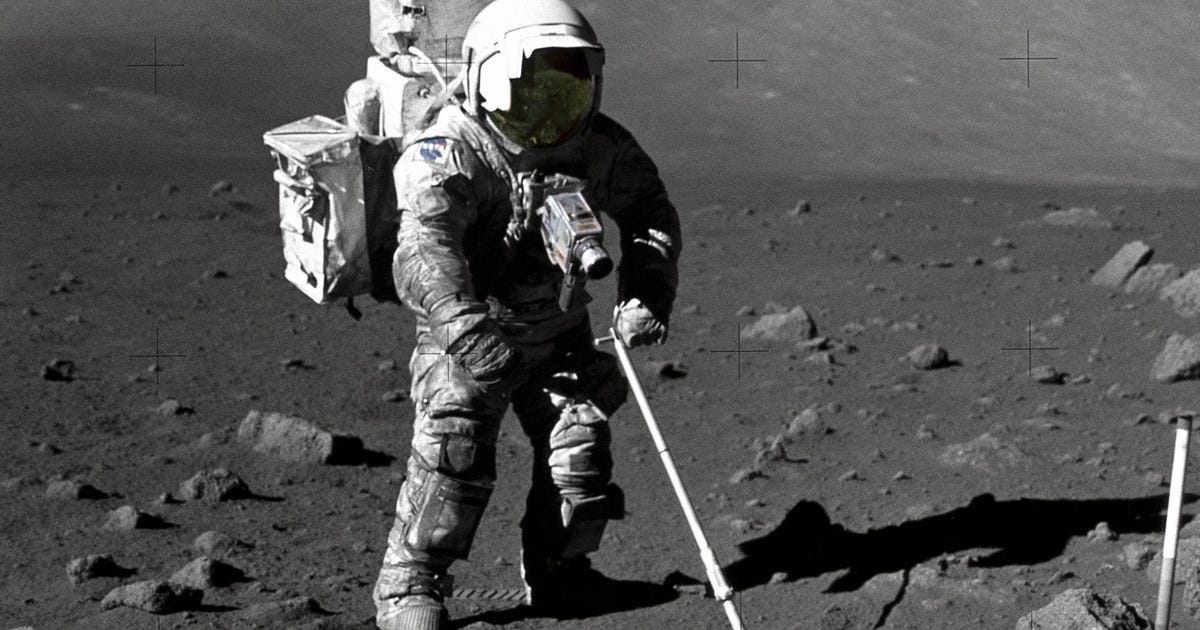
NASA astronaut Harrison Schmitt collects lunar samples throughout the Apollo 17 undertaking in 1972.
NASA
In December 1972, NASA astronauts Eugene Cernan and Harrison Schmitt drilled into the skin of the moon to assemble lunar soil samples for delivery again to Earth. This week, NASA in spite of everything opened some of the vacuum-sealed samples for the primary time.
“We have now had a possibility to open up this extremely treasured pattern that is been stored for fifty years underneath vacuum,” mentioned Thomas Zurbuchen, affiliate administrator of NASA’s Science Undertaking Directorate, in a observation. “We in spite of everything get to peer what treasures are held inside.”
The tube is a time tablet, no longer simplest from the deep geological historical past of the moon, but additionally from an previous time within the house age when our gear had been extra primitive.
“The company knew science and generation would evolve and make allowance scientists to check the fabric in new techniques to deal with new questions one day,” mentioned Lori Glaze, director of NASA’s Planetary Science Department.
Zurbuchen says the timing may be serendipitous as it is helping NASA get ready for its upcoming go back to the moon later this decade as a part of the Artemis program.
“Working out the geologic historical past and evolution of the moon samples on the Apollo touchdown websites will lend a hand us get ready for the forms of samples that can be encountered throughout Artemis,” he mentioned.
Getting at the preserved sample wasn’t as simple as just popping a cap. Before the contents of the sealed tube could be extruded, it was first scanned using X-ray CT technology to create a 3D image of what the team could expect to find inside. Then all of the gas in an outer, protective tube was collected for study.
Next, the inner container was pierced to extract any gases present inside.
“We have extracted gas out of this core, and we hope that will help scientists when they’re trying to understand the lunar gas signature by looking at the different aliquots [samples taken for chemical analysis],” mentioned Ryan Zeigler, Apollo pattern curator.
In the end the powdery grey contents had been driven out of the cylinder and separated into half-centimeter increments.

The Apollo 17 core pattern 73001 processing workforce works at NASA’s Johnson House Middle in Houston.
NASA/Robert Markowitz
Even prior to beginning the method on Monday, the workforce had carried out dry runs the usage of a mock-up within the lab. The entire procedure needed to be finished via sticking fingers into massive gloves within a vacuum glovebox and manipulating specialised gear to get on the pattern.
The paintings was once finished as a part of the Apollo Subsequent Technology Pattern Research Program, or Angsa, at Johnson House Middle in Houston.
Now, with the cat out of the bag, or quite the regolith out of the tube, the pattern must be analyzed to peer what precisely has been ready half of a century to be came upon.
NASA astromaterials curator Francis McCubbin says these days’s astronauts will even pay the present ahead to scientists operating within the latter half of of this century.
“We curated those samples for the longer term, in order that scientists 50 years one day may analyze them,” McCubbin says. “Thru Artemis, we are hoping to supply the similar probabilities for a brand new technology of scientists.”


